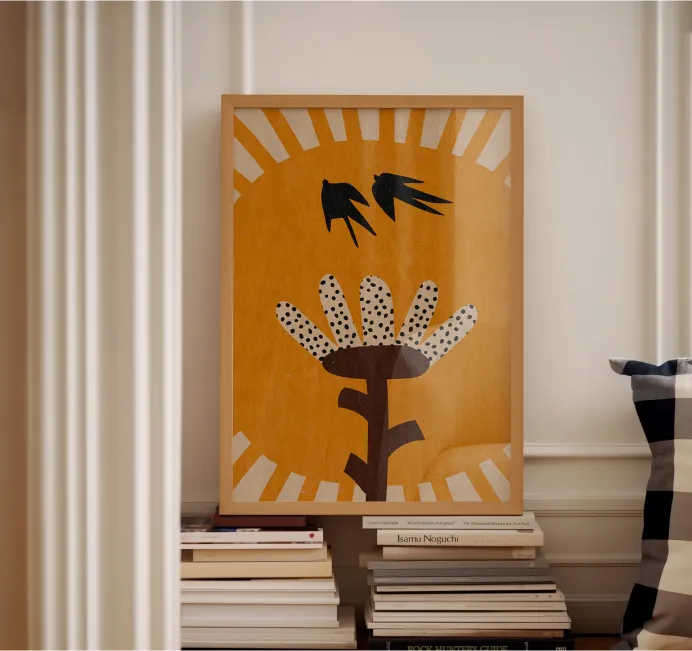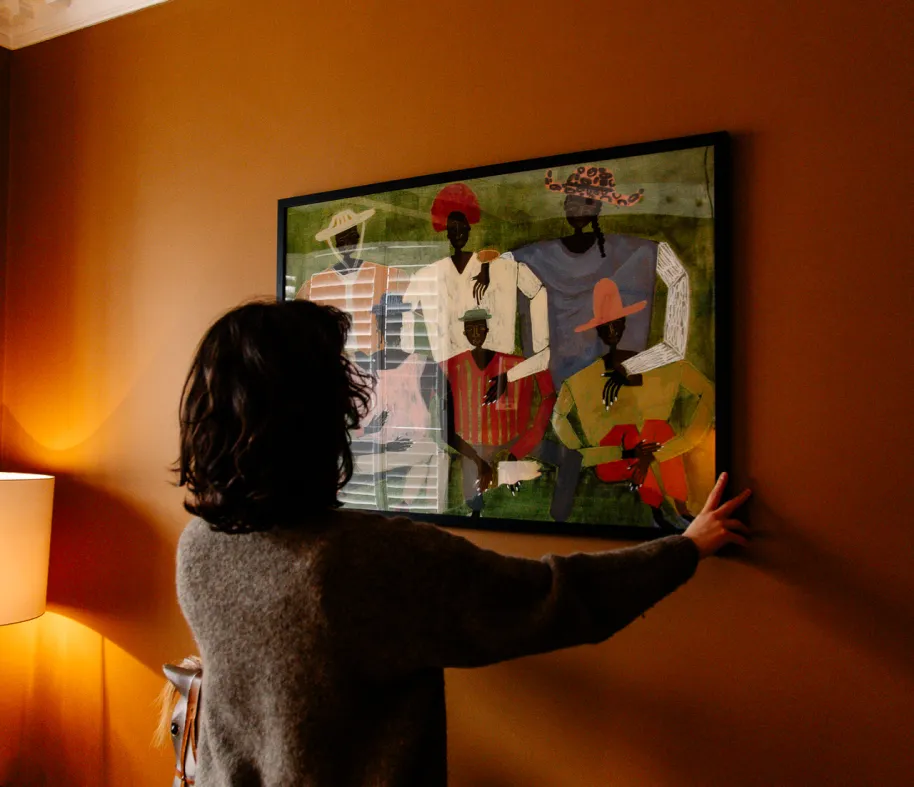Want a mystery discount?
Spring Sale - 25% off everything
Free delivery over £200

You've got a
Mystery Discount
I'm not interested
In conversation with... Sarah Wisniewska
We caught up with photographer and art directress, Sarah. At just 10 years old Sarah received her first film camera that sparked her love for photography. Authenticity and timelessness are just some of the things she loves about working with film. Read the full interview to discover her creative influences and processes.

What first sparked your interest in photography, and how did you transition from that initial spark to becoming an art director and photographer?
I received my first film camera at the age of 10, and for many years, my photography journey revolved around capturing moments during my travels. This experience instilled in me a sense of freedom and a deep immersion in the places I explored. I sought out the beauty and mystery in the everyday, which naturally allowed me to create an alternative reality for myself that enveloped me in a way no other activity could.
For many years, I viewed photography as just a hobby, but once I let go of some limiting beliefs, I discovered the possibility of merging my greatest passion with my professional life. This transition from working alone to collaborating with a team opened my eyes to the immense joy of collective creativity, and I found that creating something together is a truly fulfilling aspect of my work in art direction.
Do you prefer working with 35mm film over digital photography? What does film give you that digital can’t?
Film brings a sense of authenticity and timelessness that I feel digital often struggles to replicate. There’s something unique about the way film interacts with light and color—it creates textures and tones that feel much more organic and atmospheric. Shooting with film also allows for more thoughtful, intentional photography because every frame counts.
What film gives me that digital can’t is that nostalgic, almost dreamlike quality. The colors on film feel warmer, more tangible, and they often surprise you in the most beautiful ways when developed. I also love the “imperfections” that come with film—the grain, the occasional light leaks—because they add a layer of character to the images.
Has living and working in Berlin influenced your creative style or subject matter? If so, how
I’m particularly inspired by the people here, who are eager to create, explore, and have fun—this energy not only motivates me but also offers me a wealth of subjects to capture.
What’s your process when you approach a new shoot? Do you have a clear vision from the beginning, or do you prefer to let it evolve organically?
I work best when there’s room for spontaneity and freedom. I tend to carry my camera with me everywhere, which allows me to capture things as they happen, without overthinking or forcing a narrative.
When it comes to commercial work, I set some rules at the start. I ask clients about their expectations and establish a rough plan, but I always leave room for spontaneity. In the end, the best—or at least my favorite—photos tend to be those moments in between, where things feel authentic and unplanned. I believe that even in a structured shoot, it’s those candid, unexpected moments that truly capture the essence of the subject or story.
With 35mm film, there’s a certain spontaneity involved. How do you embrace or manage the unpredictability of shooting on film?
I thrive on taking risks and getting surprised by the results, and I trust my tools and my skills enough to know that the outcomes will often be rewarding. Of course, things might not always go as planned, but that uncertainty is a vital part of the creative process, that’s the fun part. I also appreciate the time spent waiting for developed film after a shoot; even if it’s just a couple of days, this disconnection allows me to approach my work with fresh eyes, making the selection process easier and more insightful.
Your work often captures striking colours and quite abstract moments. Would you say that is your style?
I would say capturing striking colors and abstract moments is a hallmark of my style. I have a fascination with the grotesque, which allows me to explore the beauty in unexpected places and challenge conventional aesthetics. I want to invite viewers to reflect deeply on my work, sparking their curiosity about the broader context of each scene. I want them to ponder what the whole scenery might have looked like, how the elements interact, and the stories that linger just beyond the frame, encouraging a richer engagement with the images I create.
Who are some photographers or other artists who have inspired your work? Are there any specific influences that led you to explore 35mm film?
So many! At the beginning of my photographic journey, I drew biggest inspiration from iconic 20th-century photographers, notably Richard Avedon for his striking portraiture, William Eggleston for his vibrant use of color in everyday scenes, and Nan Goldin for her intimate and candid exploration of personal relationships.
How do you see your work evolving in the future? Do you think you'll continue shooting 35mm, or are there other formats or mediums you'd like to explore?
I definitely plan to continue shooting film for as long as I can afford it, and I hope that will be for a long time, despite the rising costs of film. I’m excited about the possibility of exploring medium and large format film, as they have a larger surface area than 35mm, allowing it to capture more detail, resolution, and dynamic range and producing more nuanced images, especially when enlarged or printed.
However, Henri Cartier-Bresson once said something that resonates with me: “*People think far too much about techniques and not enough about seeing*.” This reminds me that while I may be drawn to different formats and tools, my true passion lies in the act of observation and capturing moments as they unfold. I know that I will shoot with whatever I have at hand, always prioritizing the story I want to tell over the equipment I use.
What do you want people to feel or take away when they see your photographs? Is there a particular message or mood you aim to communicate?
I aim to evoke emotions of nostalgia, drawing people into a world defined by rich textures, vibrant colors, and thoughtful compositions. I hope my work communicates a sense of wonder and invites people to see the extraordinary in the ordinary, fostering a greater appreciation for the fleeting moments that shape our lives.

"Very happy customer here - shipped & delivered exactly in the promised timeframe, great packaging that protected the art without going overboard. Amazing art selection and no import duties to the EU! I couldn’t be happier, thank you so much GoodMood!! :)"
"Excellent quality prints with colours that really pop. I love the range of Artists that GoodMood has available. Highly recommended!"
"Gorgeous prints, excellent service and communication."
"I'm delighted with my prints, they look fantastic on the wall! The website was a particular highlight, user-friendly and very easy to view products. Speedy and flawless delivery - I'll be back for more prints!"
"Really happy with my new prints from GoodMood - great prices, quick delivery and they look fab!"
4.9 star rating
Browse Art by Style
Browse Art by Subject
Browse Art by Medium
All of our paper and frames are FSC certified
We only use eco inks, plastic and acid free
We print and frame globally, locally, to minimise our environmental impact
We only print to order, meaning we have zero waste
Our museum grade, heavyweight paper ensures Giclée printed colours, POP!
We are a community dedicated to supporting independent artists
This website uses cookies to ensure you receive the best possible experience

